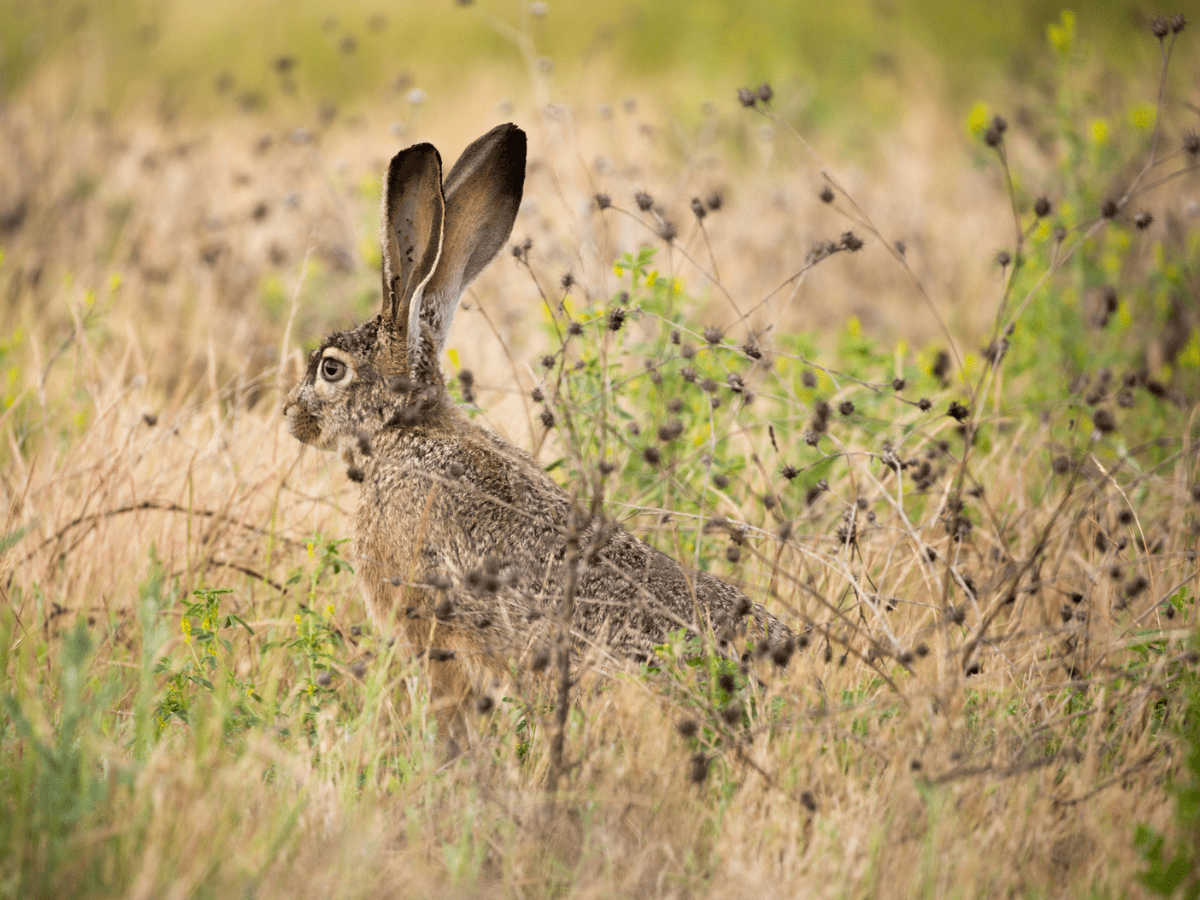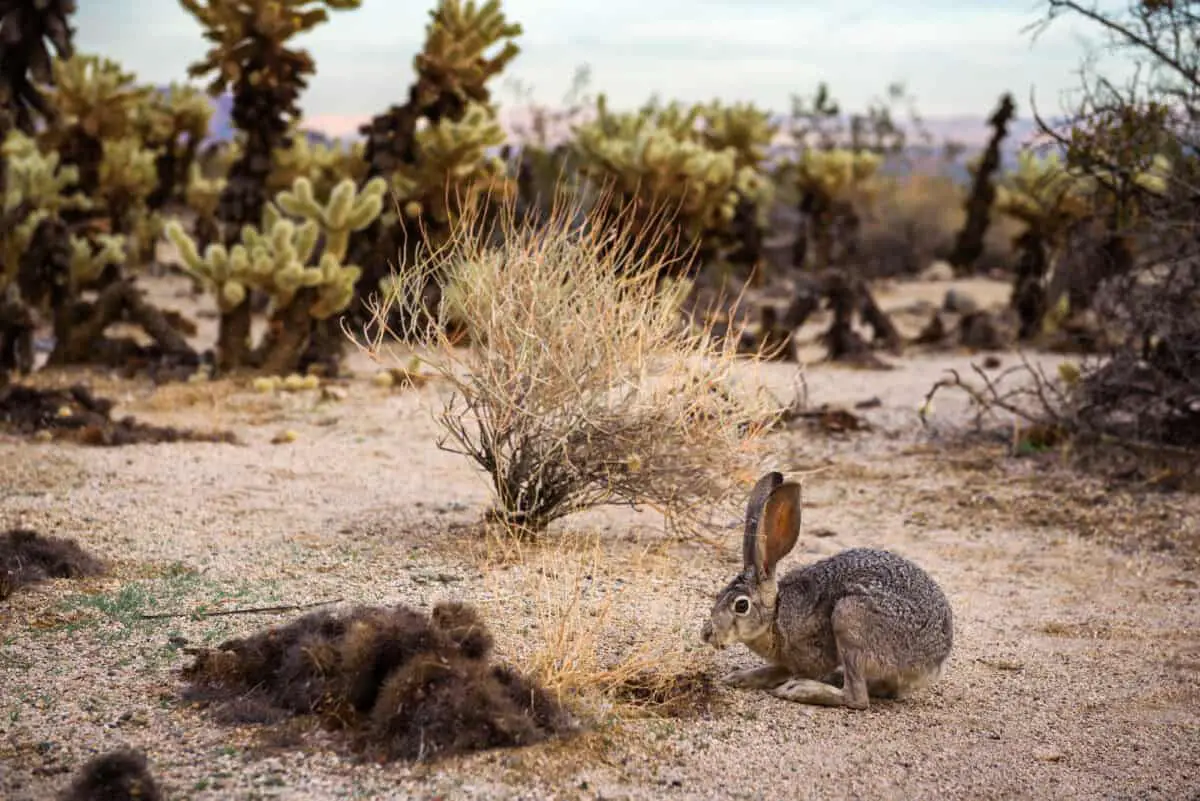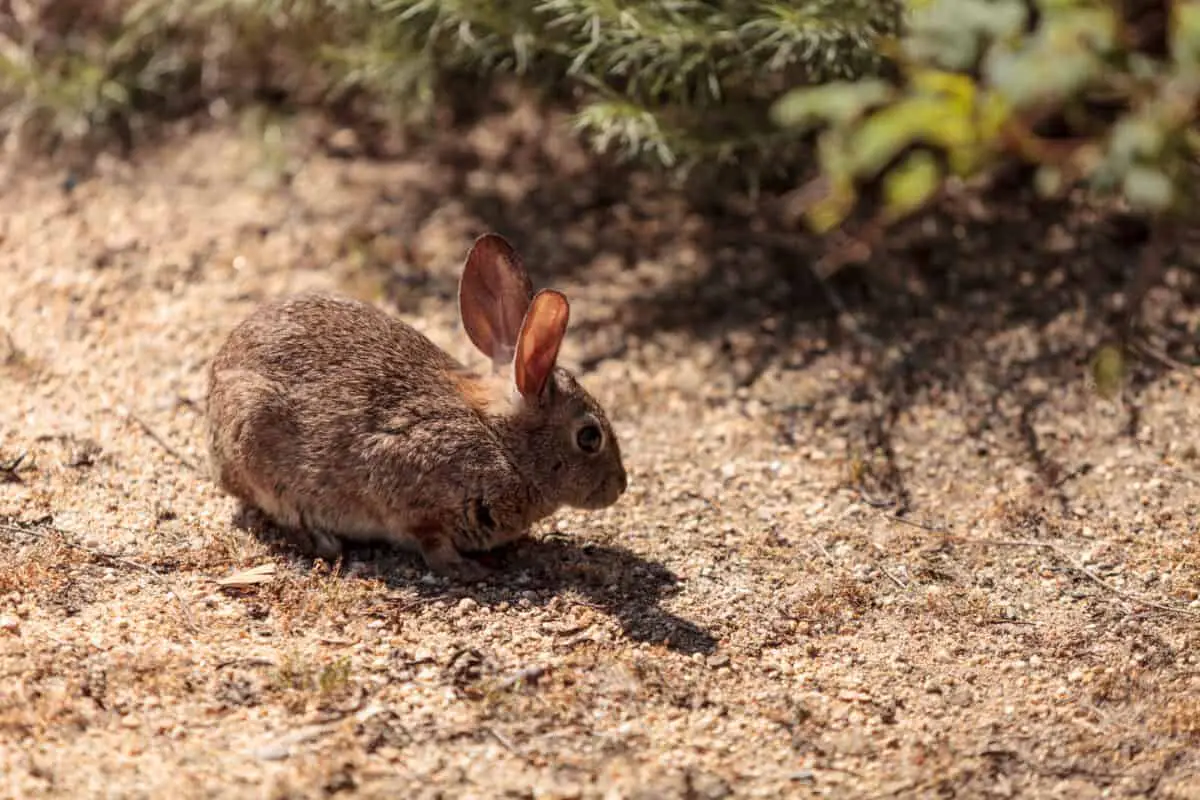California is home to an eclectic variety of wildlife. The northern regions are full of life, including some sizeable fauna, like the North American cougar, black bear, Roosevelt elk, and black-tailed deer. The hot and dry climate in the south creates ideal habitats for snakes, iguanas, scorpions, and predator birds.
While fascinating, you don’t necessarily want to come across these types of animals in the wild. However, a California wild rabbit is a welcome sight on any walk or hike. The rabbits of California are as diverse as the terrain, with around seven species found scattered throughout the entire state.

Types of Rabbits in California
Did you know that over 50% of the worldwide rabbit population is in North America? They are among the most common mammals found on the continent and are evenly dispersed between states. In California, there are around seven recognized species, with three, in particular, being the most common (jackrabbits, cottontails, and brush rabbits).
As a Californian, it’s important to be able to differentiate between the native species. Although they are cute, some are quite invasive and can cause destruction to crops and property. Some species of rabbit are endangered so residents must look out for them for conservation.
While rabbits can be pests, it’s possible to coexist with them. This article will help you learn about California’s native rabbits and will also detail management strategies to ensure you can enjoy their presence without suffering from property damage.
California Cottontail Rabbit (Sylvilagus Audubonii)
The cottontail rabbit, also known as the desert cottontail, is one of the most common rabbits in California. This breed has significantly different habits and tendencies from other common species, like the European rabbit. For example, cottontails don’t partake in standard social burrow systems.
Cottontails are typically inactive during the middle of the day. They forage early in the mornings and early in the evenings. What’s more, they don’t tend to leave their burrows when it’s windy. This is a natural defensive instinct as the wind can prevent them from hearing nearby predators.
Interestingly, these rabbits give birth to kits (baby rabbits) in vacated burrows, usually from other animals. They have a lifespan of under two years in most California regions. However, this is mainly because they’re easy prey for other local wildlife. As they are relatively defenseless, very few cottontails actually live to adulthood.
Their main predators include:
- Snakes
- Coyotes
- Predatory birds
- Wolves
- Mountain lions
Cottontails are one of the most typical southern California rabbits. They are found mainly along the California-Nevada border and are also populous in Baja California, Mexico. They feed primarily on grass but also eat leaves and tree bark.
Physical Characteristics
- Body length: 14 to 17 inches
- Tail length: 1.2 to 2.4 inches
- Ear length: 2.4 to 3.5 inches
- Hindfeet length: 2.8 to 3.5 inches
- Weight: 1.5 to 2.6 pounds

California Black-Tailed Hare (Lepus Californicus)
The black-tailed hare, or jackrabbit, is another rabbit species abundant in California. They are the largest species of rabbit in the state.
Often referred to as the American desert hare, this is a highly adaptable and durable mammal that can survive in a range of climates. However, it does not migrate and spends the majority of its time in warm regions, making California the perfect habitat.
In California and Mexico, the black-tailed jackrabbit can be found at elevations of up to 10,000 feet above sea level. As they are a primary target for large predators, the young are born with fur and open eyes, ensuring they develop defensive instincts very quickly. They can move within minutes of birth.
These rabbits feed mainly on grass, shrubs, and other greenery within close proximity to their habitat. Their varied diet ensures they can survive in different locations. Much like other small fauna, black-tailed rabbits are important prey for major predators, like mountain lions, coyotes, and birds of prey.
Physical Characteristics
- Body length: 2 feet (24 inches)
- Tail length: 2 to 4.4 inches
- Ear length: 3.9 to 5.1 inches
- Hindfeet length: 5.5 inches
- Weight: 3 to 6 pounds
California Brush Rabbit (Sylvilagus Bachmani)
The California brush rabbit is another common species found along the west coast. It is much smaller than the cottontail and jackrabbit and requires a much more specific habitat for survival. These small creatures burrow themselves in dense foliage, like bramble and brush (hence the name).
Brush rabbits typically live and forage alone or in small groups. They rarely leave their brushy habitats, even during the breeding season. Although they are populous, brush rabbits are quite secretive and can be difficult to stumble across. They typically come out of their habits in the mid-morning for sunlight exposure.
Due to their size and lack of defensive capabilities against predators, brush rabbits are naturally cautious. When they sense danger, they use their hind feet to thump the ground. This indicates to nearby rabbits that there may be a predator in close proximity.
Brush rabbits mainly eat grass and local flowers. However, they also eat berries and shrubs if they are plentiful in the habitat. As with most other California rabbit species, the brush rabbit is hunted by intimidating predators, like cougars, bobcats, snakes, coyotes, and birds of prey. However, due to their size, they can be quite elusive and are capable of climbing to escape their predators.
Physical Characteristics
- Body length: 11.9 to 14.5 inches
- Tail length: 2 inches
- Ear length: 2.5 to 3.2 inches
- Hindfeet length: 2 to 3 inches
- Weight: 18 to 32.3 ounces

Other Common Rabbits of California
The cottontail, black-tailed hare, and brush rabbits are the most common and widely dispersed species in the state. However, some other rabbit species native to the Golden State include:
- California White-Tailed Hare – Jackrabbit
- Nuttall’s Cottontail (Sylvilagus Nutalli)
- Snowshoe Hare (Lepus Americanus)
- The Californian (California white rabbit)
Rabbits as Pests
Because many people keep them as pets, it’s easy to overlook rabbits as harmful pests. However, the size and abundance of some of California’s native species mean they can be very destructive. Residents should be wary of this to prevent their properties from being damaged.
Damage
Gardens and landscaped areas are particularly vulnerable to rabbits, especially those with flowers, shrubs, and food or crops. Popular garden flora among rabbits include:
- Beets
- Carrots
- Broccoli
- Peas
- Beans
- Lettuce
- Nuts
- Apples
- Berries
- Parsely
- Flowers
- Tree bark
Larger species of rabbits have also been known to chew through irrigation pipes and water hoses. This causes significant inconveniences during drought or water shortages. Some rabbits carry diseases that can infect humans and other animals, including your pets.
Management
If you want to preserve your garden or property, there are several effective ways to deter rabbits from causing damage. These include harmful and unharmful approaches, such as:
- Fencing your garden
- Setting traps
- Spreading pest repellent
- Hiring pest control professionals
Is it Legal to Kill Rabbits n California?
It is legal to kill rabbits in California as long as the species isn’t protected or endangered. However, it’s important to note that the use of firearms is only permitted in certain rural locations.
If you intend to kill rabbits using firearms or otherwise, be sure to consult your local wildlife department to clarify the legalities. Typically, the best time to hunt rabbits is early in the morning or around dusk.





